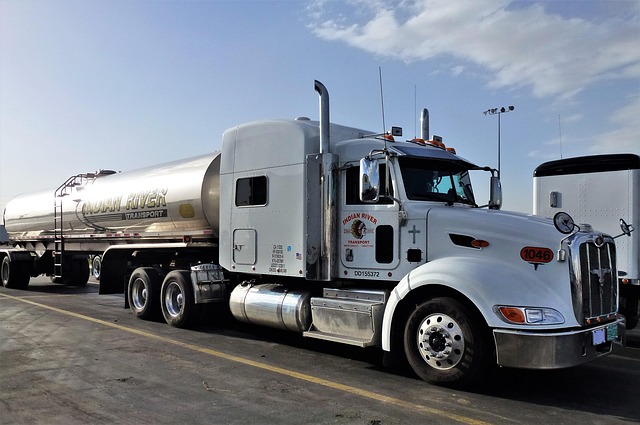Workers' Compensation (WC) is crucial for protecting fleet employees, addressing unique risks like accidents, load securing, and fatigue. Businesses should collaborate with insurers to create cost-effective yet comprehensive WC plans. Streamlining claims, leveraging technology, and implementing wellness programs can reduce costs. Prioritizing safety through training and ADAS lowers claims and insurance expenses, demonstrating fiscal responsibility while maintaining employee welfare. Tailored benefits packages address fleet employees' specific needs, balancing affordability and quality protection measures.
In today’s competitive business landscape, balancing affordability with robust employee protection is paramount, especially for fleet operators. Workers’ compensation insurance plays a crucial role in safeguarding your employees while managing operational costs. This comprehensive guide explores strategies to navigate the complexities of workers comp for fleet employees, ensuring both financial stability and employee welfare without breaking the bank. Discover insights on understanding coverage needs, implementing cost-effective measures, and adopting a holistic approach to employee wellbeing and financial viability.
Understanding Workers' Compensation for Fleet Employees

For fleet employees, Workers’ Compensation (WC) is a crucial safety net that provides financial protection and medical coverage in case of work-related injuries or illnesses. This is especially important given the unique risks associated with driving and operating vehicles for business purposes. WC ensures that workers receive necessary treatment and are compensated for lost wages during their recovery period.
Understanding the intricacies of WC for fleet employees involves recognizing that these policies must be tailored to address specific industry challenges, such as on-the-job accidents, load securing issues, and fatigue management. Employers in this sector should collaborate closely with insurance providers to design comprehensive WC plans that strike a balance between cost-effectiveness and robust protection for their workforce.
Strategies to Ensure Affordable Coverage

To ensure affordable coverage for both workers comp and fleet employees, businesses can implement several strategic measures. One key approach is to streamline and optimize the claims process. Efficient handling of claims reduces administrative costs and processing times, making coverage more cost-effective. Additionally, utilizing technology like digital documentation and automated adjudication can significantly enhance the overall efficiency of the workers’ compensation program.
Another effective strategy involves leveraging group discounts and negotiating better terms with insurance providers. By pooling the risk across a larger number of employees, companies can secure more favorable rates. Furthermore, offering wellness programs and preventative care initiatives to fleet employees can lower the likelihood of injuries and claims, ultimately contributing to substantial cost savings in the long run.
Protecting Employees Without Breaking the Bank

Protecting employees is paramount for any business, but balancing this with affordability is a delicate act. For companies managing a fleet of vehicles and numerous workers comp claims, the costs can accumulate quickly. However, it’s not about cutting corners but rather implementing strategic measures to enhance safety without breaking the bank.
One effective approach is to focus on preventative measures. Regular training sessions for drivers on safety protocols, vehicle maintenance, and accident avoidance can significantly reduce claims. Additionally, leveraging technology such as advanced driver-assistance systems (ADAS) in vehicles can help mitigate risks on the road, ultimately lowering insurance costs associated with worker compensation for fleet employees.
Comprehensive Approach to Employee Welfare and Financial Stability

A comprehensive approach to employee welfare is integral to any organization’s success, especially when prioritizing financial stability and managing a fleet of workers comp vehicles. This involves not just ensuring compliance with legal standards for worker’s compensation, but going above and beyond to foster a culture of care and support. By integrating robust protection measures, companies can create an environment that values each employee’s well-being while maintaining the operational efficiency of their fleet.
Such an approach includes offering competitive benefits packages tailored to the unique needs of fleet employees, who often face distinct challenges due to the nature of their work. This might involve flexible schedules, specialized health and safety programs, and accessible resources for managing work-life balance. Balancing these considerations with affordability is key; optimizing costs associated with worker’s compensation without compromising on quality of care demonstrates a true commitment to both financial prudence and employee protection.
In conclusion, balancing affordability and robust employee protection for fleet employees through understanding and implementing strategic measures is crucial. By leveraging comprehensive approaches that prioritize both financial stability and worker welfare, businesses can ensure they meet their legal obligations while maintaining a competitive edge. Effective strategies, such as optimizing coverage plans and encouraging safe driving practices, allow for accessible workers’ compensation without breaking the bank. This balanced approach fosters a safer working environment and strengthens the overall well-being of fleet employees.
